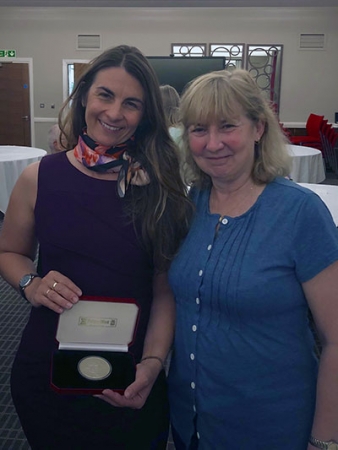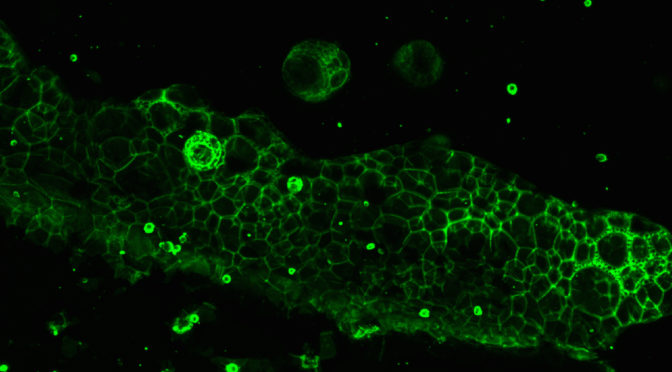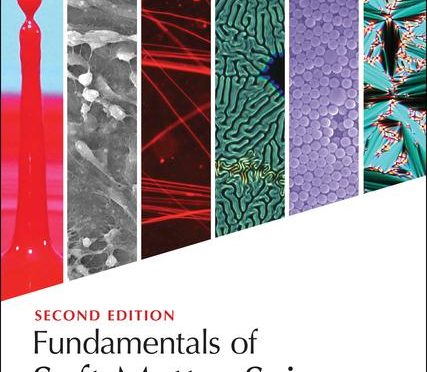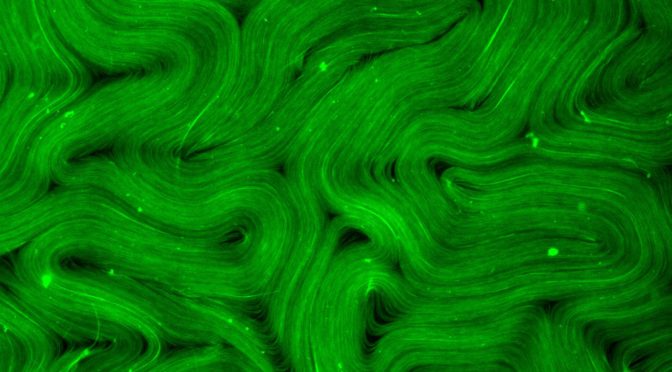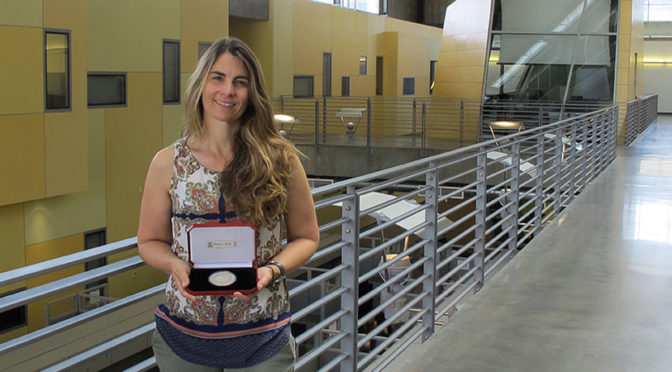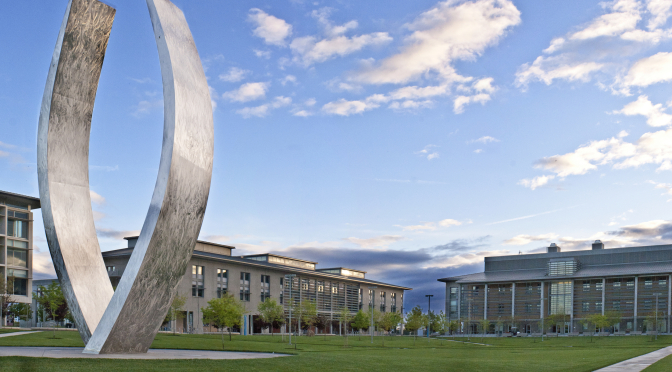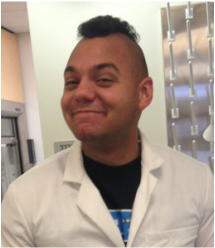This work examines self-mixing in active nematics, a class of fluids in which mobile topological defects drive chaotic flows in a system comprised of biological filaments and molecular motors. We present experiments that demonstrate how geometrical confinement can influence the braiding dynamics of the defects. Notably, we show that confinement in cardioid-shaped wells leads to realization of the golden braid, a maximally efficient mixing state of exactly three defects with no defect creation or annihilation. We characterize the golden braid state using different measures of topological entropy and the Lyapunov exponent. In particular, topological entropy measured from the stretching rate of material lines agrees well with an analytical computation from braid theory. Increasing the size of the confining cardioid produces a transition from the golden braid, to the fully chaotic active turbulent state.
Nanofoams – Nature communications
Nanoparticle-based hollow microstructures formed by two-stage nematic nucleation and phase separation
Sheida T. Riahinasab, Amir Keshavarz, Charles N. Melton, Ahmed Elbaradei, Gabrielle I. Warren, Robin L. B. Selinger, Benjamin J. Stokes & Linda S. Hirst
Nature Communications volume 10, Article number: 894 (2019)
Rapid bulk assembly of nanoparticles into microstructures is challenging, but highly desirable for applications in controlled release, catalysis, and sensing. We report a method to form hollow microstructures via a two-stage nematic nucleation process, generating size-tunable closed-cell foams, spherical shells, and tubular networks composed of closely packed nanoparticles. Mesogen-modified nanoparticles are dispersed in liquid crystal above the nematic-isotropic transition temperature (TNI). On cooling through TNI, nanoparticles first segregate into shrinking isotropic domains where they locally depress the transition temperature. On further cooling, nematic domains nucleate inside the nanoparticle-rich isotropic domains, driving formation of hollow nanoparticle assemblies. Structural differentiation is controlled by nanoparticle density and cooling rate. Cahn-Hilliard simulations of phase separation in liquid crystal demonstrate qualitatively that partitioning of nanoparticles into isolated domains is strongly affected by cooling rate, supporting experimental observations that cooling rate controls aggregate size. Microscopy suggests the number and size of internal voids is controlled by second-stage nucleation.
Colloidal aggregation in liquid crystal
Colloidal aggregation in anisotropic liquid crystal solvent
Devika G. Sudha, Jocelyn Ochoa and Linda S. Hirst, Soft Matter (2021) https://doi.org/10.1039/D1SM00542A
The mutual attraction between colloidal particles in an anisotropic fluid, such as the nematic liquid crystal phase, leads to the formation of hierarchical aggregate morphologies distinct from those that tend to form in isotropic fluids. Previously it was difficult to study this aggregation process for a large number of colloids due to the difficulty of achieving a well dispersed initial colloid distribution under good imaging conditions. In this paper, we report the use of a recently developed self-assembling colloidal system to investigate this process. Hollow, micron-scale colloids are formed in situ in the nematic phase and subsequently aggregate to produce fractal structures and colloidal gels, the structures of which are determined by colloid concentration and temperature quench depth through the isotropic to nematic phase transition point. This self-assembling colloidal system provides a unique method to study particle aggregation in liquid crystal over large length scales. We use fluorescence microscopy over a range of length scales to measure aggregate structure as a function of temperature quench depth, observe ageing mechanisms and explore the driving mechanisms in this unique system. Our analyses suggest that aggregate dynamics depend on a combination of Frank elasticity relaxation, spontaneous defect line annihilation and internal aggregate fracturing.
Submersed micropatterned structures control active nematic flow
Submersed micropatterned structures control active nematic flow, topology, and concentration
Kristian Thijssen*, Dimitrius A. Khaladj*, S. Ali Aghvami, Mohamed Amine Gharbi, Seth Fraden, Julia M. Yeomans, Linda S. Hirst, and Tyler N. Shendruk
PNAS September 21, 2021 118 (38) e2106038118; https://doi.org/10.1073/pnas.2106038118
Coupling between flows and material properties imbues rheological matter with its wide-ranging applicability, hence the excitement for harnessing the rheology of active fluids for which internal structure and continuous energy injection lead to spontaneous flows and complex, out-of-equilibrium dynamics. We propose and demonstrate a convenient, highly tunable method for controlling flow, topology, and composition within active films. Our approach establishes rheological coupling via the indirect presence of fully submersed micropatterned structures within a thin, underlying oil layer. Simulations reveal that micropatterned structures produce effective virtual boundaries within the superjacent active nematic film due to differences in viscous dissipation as a function of depth. This accessible method of applying position-dependent, effective dissipation to the active films presents a nonintrusive pathway for engineering active microfluidic systems.
Merced team studying shark electrosensing
Our lab recently published two new papers on the subject of electro-sensing in cartilaginous fishes, a group that includes sharks and rays. The sensing organ (AoL) in these fish is filled with a gel-like substance and we are interesting is figuring out how this gel works!
In the first paper our team, Lead by Molly Phillips, a graduate student in Chris Amemiya’s lab at Merced investigated the role of chitin in the electrosensory gel.
“Evidence of chitin in the ampullae of Lorenzini of chondrichthyan fishes”Molly Phillips, W. Joyce Tang, Matthew Robinson, Daniel Ocampo Daza, Khan Hassan, Valerie Leppert, Linda S. Hirst, Chris T. Amemiya, , Current Biology, Volume 30, Issue 20, 2020, Pages R1254-R1255, https://doi.org/10.1016/j.cub.2020.08.014.
The second paper focuses on the structure of the gel.
Structural Characteristics and Proton Conductivity of the Gel Within the Electrosensory Organs of Cartilaginous Fishes Molly Phillips, Alauna Wheeler, Matthew J Robinson, Valerie Leppert, Manping Jia, Marco Rolandi, Linda S Hirst, Chris T Amemiya, ISCIENCE, in press (2021) August 03, (2021) https://doi.org/10.1016/j.isci.2021.102947
Co-authors include Physics graduate student Alauna Wheeler, who conducted the X-ray work with Phillips at the Advanced Light Source at Lawrence Berkeley National Laboratory; graduate student Matthew Robinson; and UC Santa Cruz electrical engineering Professor Marco Rolandi and his graduate student Manping Jia. The Santa Cruz team provided equipment and expertise for the conductance measurements.
Current Biology – Chitin in cartilaginous fishes
Our new work in collaboration with Chris Amemiya’s lab at UC Merced demonstrates the presence of Chitin in an unexpected place – the electro sensory organs of cartilaginous fishes.
Molly Phillips, W. Joyce Tang, Matthew Robinson, Daniel Ocampo Daza, Khan Hassan, Valerie Leppert, Linda S. Hirst, Chris T. Amemiya,
“Evidence of chitin in the ampullae of Lorenzini of chondrichthyan fishes”, Current Biology, Volume 30, Issue 20, 2020, Pages R1254-R1255,
https://doi.org/10.1016/j.cub.2020.08.014.
Read a news article here
Abstract,We previously reported that the polysaccharide chitin, a key component of arthropod exoskeletons and fungal cell walls, is endogenously produced by fishes and amphibians in spite of the widely held view that it was not synthesized by vertebrates [1]. Genes encoding chitin synthase enzymes were found in the genomes of a number of fishes and amphibians and shown to be correspondingly expressed at the sites where chitin was localized [1,2]. In this report, we present evidence suggesting that chitin is prevalent within the specialized electrosensory organs of cartilaginous fishes (Chondrichthyes). These organs, the Ampullae of Lorenzini (AoL), are widely distributed and comprise a series of gel-filled canals emanating from pores in the skin ( Figure 1A). The canals extend into bulbous structures called alveoli that contain sensory cells capable of detecting subtle changes in electric fields ( Figure 1B) [3,4]. The findings described here extend the number of vertebrate taxa where endogenous chitin production has been detected and raise questions regarding chitin’s potential function in chondrichthyan fishes and other aquatic vertebrates.
Fundamentals of Soft matter science 2nd Ed – out now!
Summary
This revised edition continues to provide the most approachable introduction to the structure, characteristics, and everyday applications of soft matter. It begins with a substantially revised overview of the underlying physics and chemistry common to soft materials. Subsequent chapters comprehensively address the different classes of soft materials, from liquid crystals to surfactants, polymers, colloids, and biomaterials, with vivid, full-color illustrations throughout. There are new worked examples throughout, new problems, some deeper mathematical treatment, and new sections on key topics such as diffusion, active matter, liquid crystal defects, surfactant phases and more.
• Introduces the science of soft materials, experimental methods used in their study, and wide-ranging applications in everyday life.
• Provides brand new worked examples throughout, in addition to expanded chapter problem sets and an updated glossary.
• Includes expanded mathematical content and substantially revised introductory chapters.
This book will provide a comprehensive introductory resource to both undergraduate and graduate students discovering soft materials for the first time and is aimed at students with an introductory college background in physics, chemistry or materials science.
Topological Chaos in active nematics
Topological chaos in active nematics, Amanda J. Tan, Eric Roberts, Spencer Smith, Ulyses Alvarado, Jorge Arteaga, Sam Fortini, Kevin Mitchell, and Linda S. Hirst, Aug 5th, NATURE PHYSICS (2019) Link
Abstract: Active nematics are out-of-equilibrium fluids composed of rod-like subunits, which can generate large-scale, self-driven flows. We examine a microtubule-kinesin-based active nematic confined to two dimensions, exhibiting chaotic flows with moving topological defects. Applying tools from chaos theory, we investigate self-driven advection and mixing on different length scales. Local fluid stretching is quantified by the Lyapunov exponent. Global mixing is quantified by the topological entropy, calculated from both defect braiding and curve extension rates. We find excellent agreement between these independent mea-sures of chaos, demonstrating that the extensile stretching between microtubules directly translates into macroscopic braiding of positive defects. Remarkably, increasing extensile activity (through ATP concentration) does not increase the dimensionless topological entropy. This study represents an application of chaotic advection to the emerging field of active nematics and quantification of the collective motion of an ensemble of defects (through topological entropy) in a liquid crystal.
The full text of the paper can be found here https://rdcu.be/bM3Gi
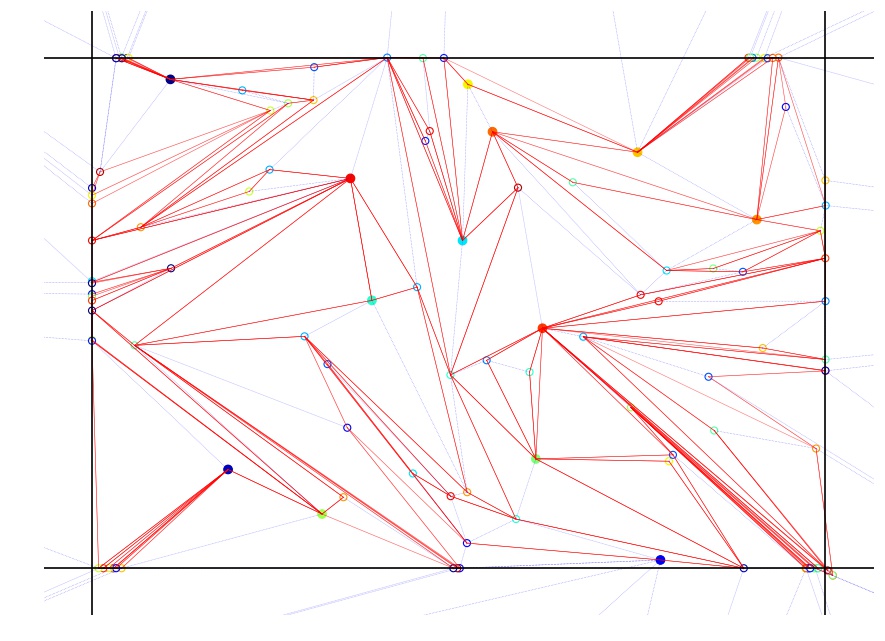
Hirst wins Hilsum Medal
Linda Hirst has been named this year’s recipient of the British Liquid Crystal Society’s C. Hilsum Medal for her contributions to liquid crystal science and technology.
Read the UC Merced new article here
